
Helsinki is the capital and most populous city in Finland. It is located on the shore of the Gulf of Finland and serves as the seat of the Uusimaa region in southern Finland. Approximately 0.67 million people live in the municipality, with 1.25 million in the capital region, and 1.58 million in the metropolitan area. As the most populous urban area in Finland, it is the country's most significant centre for politics, education, finance, culture, and research. Helsinki is situated 80 kilometres (50 mi) to the north of Tallinn, Estonia, 360 kilometres (220 mi) to the north of Riga, Latvia, 400 kilometres (250 mi) to the east of Stockholm, Sweden, and 300 kilometres (190 mi) to the west of Saint Petersburg, Russia. Helsinki has significant historical connections with these four cities.
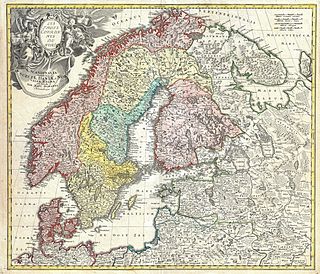
The history of Finland begins around 9,000 BC during the end of the last glacial period. Stone Age cultures were Kunda, Comb Ceramic, Corded Ware, Kiukainen, and Pöljä cultures. The Finnish Bronze Age started in approximately 1,500 BC and the Iron Age started in 500 BC and lasted until 1,300 AD. Finnish Iron Age cultures can be separated into Finnish proper, Tavastian and Karelian cultures. The earliest written sources mentioning Finland start to appear from the 12th century onwards when the Catholic Church started to gain a foothold in Southwest Finland.
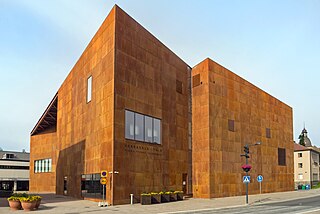
Kangasala is a town in Finland, located in the Pirkanmaa region. It lies to the east of the regional capital, Tampere. The population of Kangasala is approximately 33,000, while the metropolitan area has a population of approximately 417,000. It is the 35th most populous municipality in Finland.
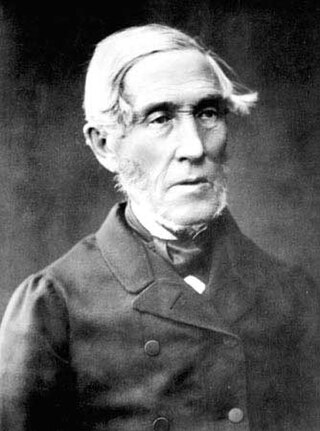
Johan Vilhelm Snellman was an influential Fennoman philosopher and Finnish statesman, ennobled in 1866. He was one of the most important 'awakeners' or promoters of Finnish nationalism, alongside Elias Lönnrot and J. L. Runeberg.

The University of Helsinki is a public university in Helsinki, Finland. The university was founded in Turku in 1640 as the Royal Academy of Åbo under the Swedish Empire, and moved to Helsinki in 1828 under the sponsorship of Tsar Alexander I. The University of Helsinki is the oldest and largest university in Finland with the widest range of disciplines available. In 2020, around 31,600 students were enrolled in the degree programs of the university spread across 11 faculties and 11 research institutes.
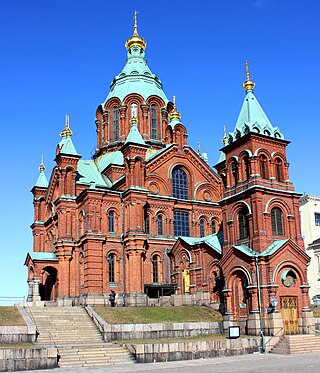
The culture of Finland combines indigenous heritage, as represented for example by the country's national languages Finnish and Swedish, and the sauna, with common Nordic and European cultural aspects. Because of its history and geographic location, Finland has been influenced by the adjacent areas, various Finnic and Baltic peoples as well as the former dominant powers of Sweden and Russia. Finnish culture is built upon the relatively ascetic environmental realities, traditional livelihoods, and heritage of egalitarianism and the traditionally widespread ideal of self-sufficiency.
Finnish poetry is the poetry from Finland. It is usually written in the Finnish language or Swedish language, but can also include poetry written in Northern Sámi or other Sámi languages. It has its roots in the early folk music of the area, and still has a thriving presence today.
Svenska Historiska Föreningen is a Swedish historical society, founded in 1880. Its members include academic researchers in History as well as students and other interested individuals. It arranges national history conferences every year, and has published the journal Historisk Tidskrift since 1881. Editorship of the journal circulates between History departments of the various Swedish universities.

Finnish literature refers to literature written in Finland. During the European early Middle Ages, the earliest text in a Finnic language is the unique thirteenth-century Birch bark letter no. 292 from Novgorod. The text was written in Cyrillic and represented a dialect of Finnic language spoken in Russian Olonets region. The earliest texts in Finland were written in Swedish or Latin during the Finnish Middle Age. Finnish-language literature was slowly developing from the 16th century onwards, after written Finnish was established by the Bishop and Finnish Lutheran reformer Mikael Agricola (1510–1557). He translated the New Testament into Finnish in 1548.
Leonidas Donskis was a Lithuanian-Jewish philosopher, political theorist, historian of ideas, social analyst, and political commentator, professor of politics and head of "VDU Academia Cum Laude" at Vytautas Magnus University, Honorary Consul of Finland in Kaunas and deputy chairman of the Lithuanian Jewish Community. He was also the member of the European Parliament (MEP) from 2009 to 2014.

Jarl Wilhelm Erik Gallén was a Finnish historian and Swedish-speaking professor in history at Helsinki University from 1964 to 1975.
The Chalmers Naval Architecture Students' Society is a naval architecture graduate students group at Chalmers University of Technology, Sweden. The Society was found in 1887 following the establishment of the Naval Architecture and Ocean Engineering Department at the University. Since 1948, Föreningen Chalmers Skeppsbyggare has been a member of the Nordic Technical Universities Shipbuilders Congress (NTHS) which includes Chalmers, Technical University of Denmark, Helsinki University of Technology in Finland, Norwegian University of Science and Technology, and the Royal Institute of Technology in Sweden. Roughly, half of the FCS members are from Sweden while the rest are international students. Some of its members are also current members of the Society of Naval Architects and Marine Engineers. Unlike other student organizations at Chalmers, the society runs as a separate entity from the Chalmers Students' Union.
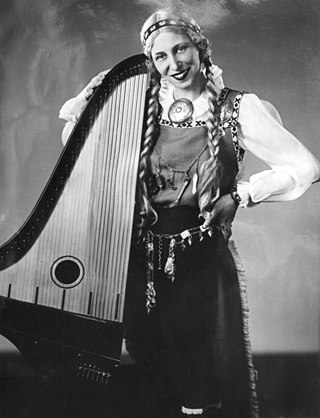
Ulla Kyllikki Katajavuori-Koskimies was a Finnish musician who played the traditional Finnish kantele, performing from the 1930s to the 1990s. One of her recordings is the Karelian folk song Konevitsan kirkonkellot.
NORDIK, or the Nordic Association for Art Historians, is an association of art historians from universities and museums in the Nordic countries. The committee was founded in Helsinki in 1984 to promote research networks between Nordic art historians. The main task of the committee since 1984 has been to organize the NORDIK conference every third year in a Nordic country. The board of NORDIK consists members from Denmark, Finland, Iceland, Norway and Sweden, and are appointed by the general assembly of NORDIK for a period of three years. The general assembly usually takes place in connection with the NORDIK conferences. The present committee was appointed by the general assembly that took place in connection with NORDIK.X in 2012 in Stockholm, Sweden. Chairman of NORDIK is prof. Jeff Werner, Stockholm University.

Elisabeth Thorsell is a Swedish writer, professional genealogist and a veteran within the Swedish genealogical movement.
Ernst Åke Kromnow was a Swedish archivist, historian and civil servant. He was National Archivist and head of the National Archives of Sweden from 1965 to 1979.
Marjatta Hietala is a Finnish historian specialising in urban history and the history of innovations. She is professor emerita of General History at the University of Tampere.

Yrjö Oskar Ruutu was a Finnish social scientist and politician. Ruutu was the first principal of the School of Social Sciences 1925–1932, 1935–1945 and 1949–1953, and the first Finnish professor of International relations 1949–1954. Ruutu was the first in Finland to defend his doctoral thesis on social sciences and wrote the first Finnish presentation on international relations as a science. He was also the head of the National Board of Education 1945–1950.
Historisk Tidskrift för Finland is a Swedish-language Finnish history journal which has been published by the Historiska föreningen since 1916. It was founded in 1916 by Per Olof von Törne, who had founded the Svenska studenters historiska förening two years earlier. He served as the journal's editor until 1924. With support for translation from the Delegation for the Promotion of Swedish Literature, managed by the Society of Swedish Literature in Finland, the journal is now also a forum for Finnish-speaking historians. The journal is published four times a year and has approximately 550 subscribers, primarily from Finland, the Nordic countries, and the Baltic region. Each paper is reviewed by two external referees.
Oloph Eric Fingal Bexell is a Swedish priest and professor emeritus in church history at Uppsala University.










